In 2015, after 14 months of what seemed like sprinting through a marathon in a stress-inducing vacuum of a metropolis, a friend and I took advantage of a four-day weekend to disappear to Kumano Kodo and the countryside of Japan.
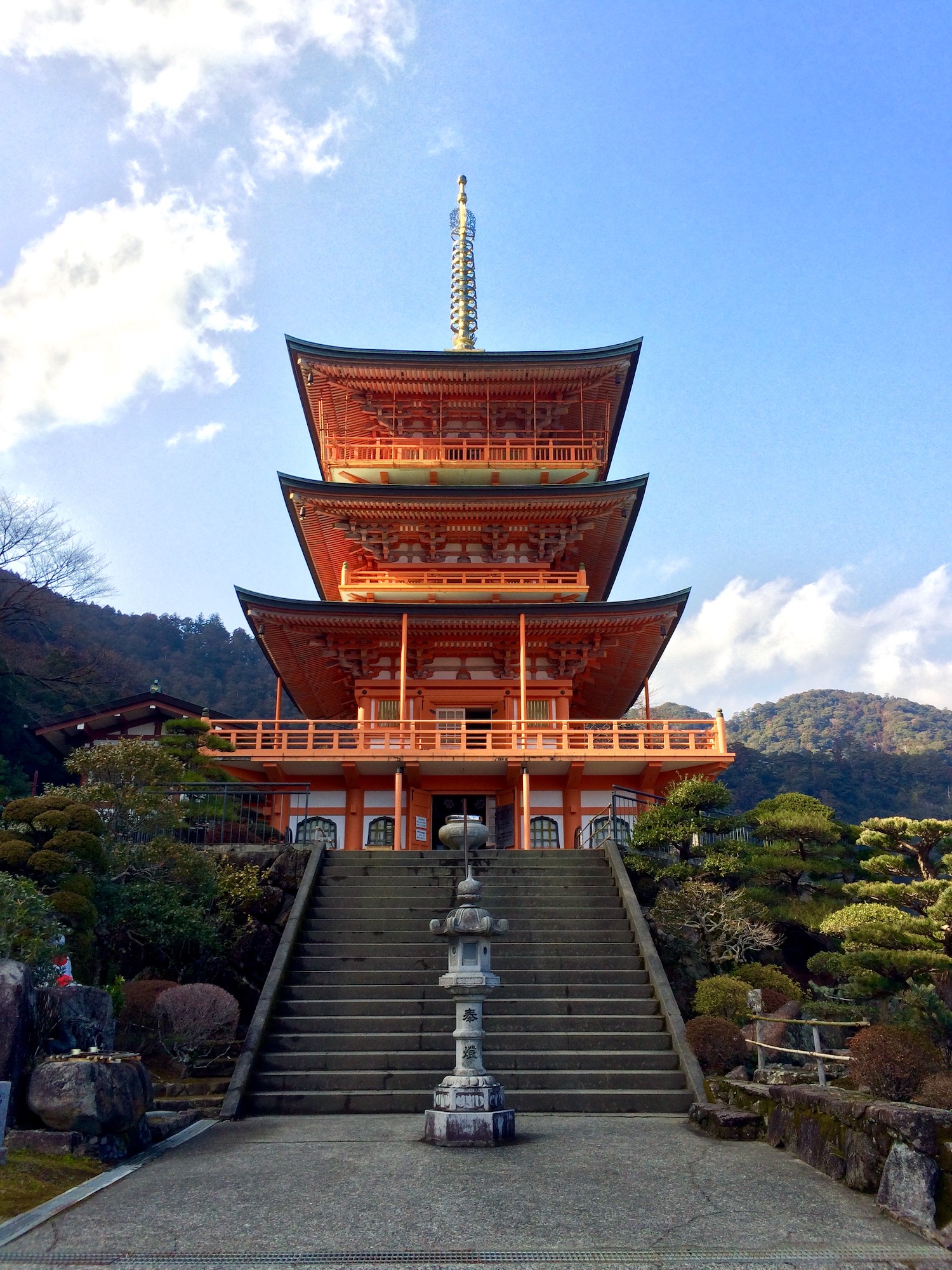
Kumano Kodo is an ancient pilgrimage route that people of all social classes and faiths walked along a thousand years ago. In 2004 it was registered as a UNESCO World Heritage Site. Throughout the extensive route, there are temples and shrines, along with small inns and towns.
Day 1: Nagoya to Shingu Station
We took an 8 a.m. highway bus from Nagoya to Shingu Station, which not being a popular destination was a very comfortable four-hour ride through the mountains with just a couple of other passengers on board. Shingu Station seemed like one of the biggest stations in the area despite having to walk nearly ten minutes to the closest convenience store, which in my majority city-only experience of this country is saying a lot.
I shouldn’t have been surprised by the local train we boarded next. When I say “local,” we’re talking a two-car, “comes once an hour” train whose fastest speed is a fourth of what I’d become accustomed to and whose form of air conditioning is single-propeller wire fans mounted to the ceiling. In a country that’s known for its innovation and modern technology, this may as well have been a different continent.
Despite the initial shock, the ride to Nachi Station was a scenic overview of what was to come as the train wound through the edges of the mountain and revealed glimpses of the Pacific Ocean between tunnels and brush. The moments when the sea was visible was long enough to enjoy, but not long enough to ruin while fussing over capturing it on film. It was there for the present and not a moment longer, and that’s what I really loved.
We still had some time at Nachi Station before getting on our next bus to Nachi no Otaki (Nachi Falls), so we explored the nearby beach.
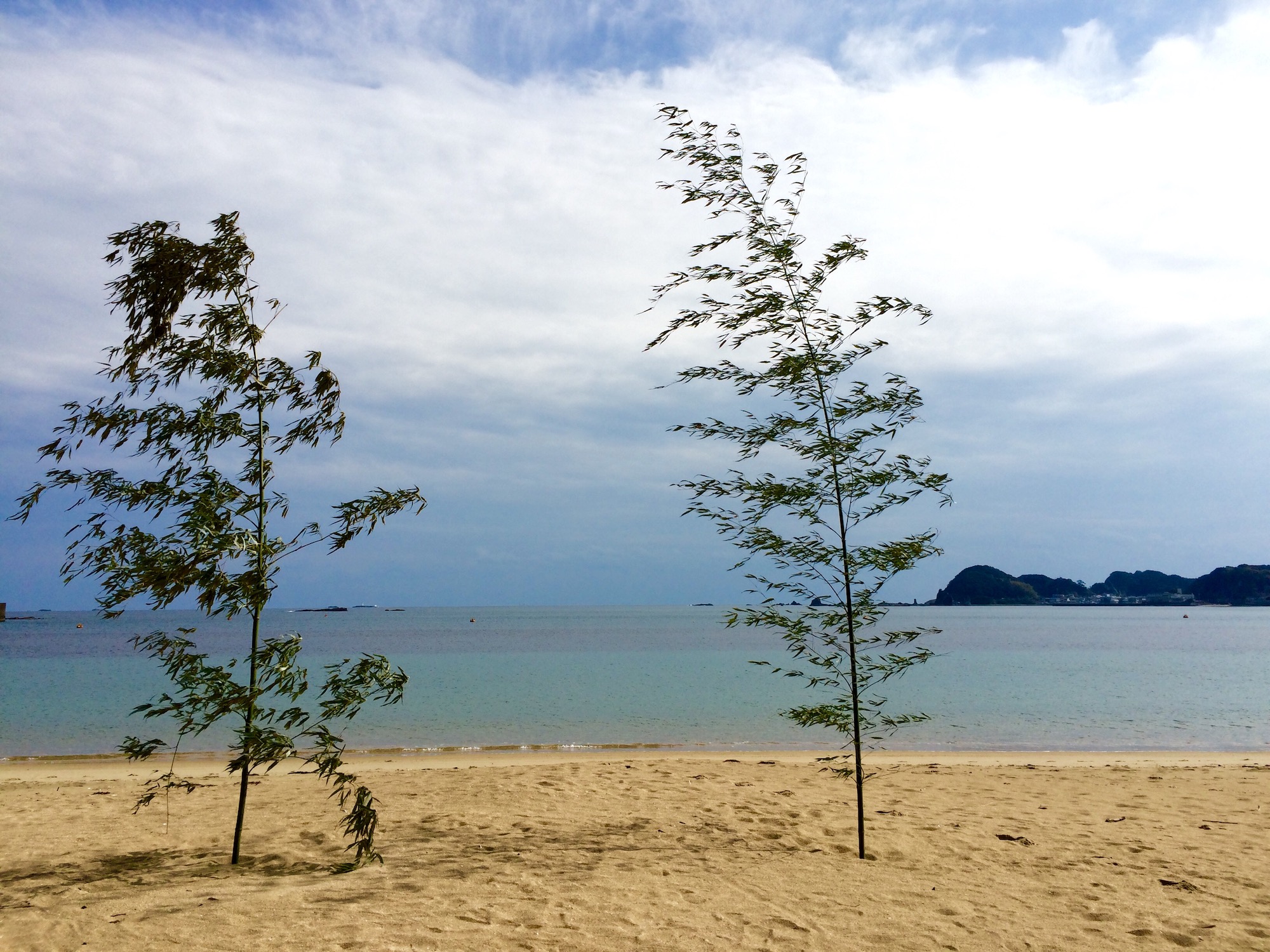
I swear this beach had stress-healing and life-calming powers, although it could’ve just been the fact that I’ve been missing the sight of large bodies of water. In all my life until I came to Japan I’d never lived more than ten minutes from the ocean.
I live a good hour and a half to two hours away from the closest beach now and I feel desperately landlocked despite being on an island.
Nachi no Otaki (Nachi Falls)
Finally, our bus came for our first destination in Kumano: Nachi no Otaki (Nachi Falls), also known as Japan’s tallest waterfall.
A friendly bus attendant greeted us as we got off the bus and handed us a map of the area with suggested walking routes. We walked about 20 minutes to reach the entrance of the Falls.

You can either stop at the shrine there or pay a few hundred yen to continue up to an observation platform and drink the water from the Falls. Once you pay and enter, there are ceramic saucers that you can fill with the Falls’ water from a small fountain.
You climb up to the platform closest to the Falls, make a wish, and toss your saucer out onto the rocks under the waterfall.


Kumano Nachi Taisha
We then followed a steep stair-filled course to Kumano Nachi Taisha, a Shinto shrine that’s one of the three sacred Kumano Sanzan shrines.



Daimon-zaka
The next path marked on the map was the Daimon-zaka trail, but finding it was a mission in itself. Eventually, after wandering through what seemed to be a mix of vacant, deteriorating houses and people’s backyards, we were back on track.
Daimon-zaka is a very beautiful path through the forest, but the path itself is no cakewalk. Whoever designed it really believed in the whole “no pain, no gain” philosophy.
Daimon-zaka consists of uneven cobblestone steps that blend together and demands the pilgrim’s full attention to avoid a twisted ankle or topple.
If anyone was reaching enlightenment on that walk, it was the speed-hiking grandmas who put my un-pilgrimagy mouth to shame. The path should come with a warning: walk like a monk, curse like a sailor.


Blue Sky Guesthouse
Finally, it was back on a bus, another train, and another bus to get to our inn for the weekend. We stayed at the Blue Sky Guesthouse located in Hongu in Tanabe City. It was already late and dark by the time we reached the streetlight-less town. The host met us at the bus stop and brought us to the inn personally.


Day 2: Hiking on Kumano Kodo
The next morning our inn host cooked us breakfast and gave us some recommendations for the area. We took his suggestion for a two-hour hike on Kumano Kodo and headed to the bus stop.
As we waited, a family of three joined us. A taxi driver nearby asked where the family was going and said he’d drive them for the same price as the bus fare. The family headed toward the taxi, but then the son, a quiet yet friendly middle-aged man, came back and asked us where we were going. We looked at our map and realized it was the same destination as the family. The man asked the taxi driver if it was OK to drive all five of us, to which the driver said was no problem. So the family of three sat in the back, my friend and I shared the passenger seat in the front. And off we went, winding and swerving our way up the narrow one-lane mountain road.
As we passed what appeared to be the only junior high school in the town, the driver informed us that it had closed down because there weren’t enough students. The driver generously stopped the meter and continued zipping up the road.
All of a sudden, light snow flurries began dusting the sky. The driver told us he lost his taxi in a big storm recently. He said he lived in Mie, the next prefecture, and drove 50 kilometers every day for his shift.
When we finally reached the entrance to the Kumano Kodo path, the driver directed us, “This is the path you want to take. That other one goes to Kyoto. Stay safe.”
My friend and I got ready to pay our share of the fare, but the family stopped us and handed the driver the full fare. We thanked them and walked together toward Hosshinmon-oji at the path entrance.
Oji are subsidiary shrines that can be found all along Kumano Kodo and are meant to protect the travelers. “Hosshinmon” means the gate to spiritual awakening.
For the next two hours, we walked together. The parents didn’t speak any English, but the son who initially approached us, whom I’ll call EK, did.
EK was a filmmaker who lived abroad in Italy and Germany for ten years before coming back to Japan. The father is a CEO and the mother is a cafe owner. The most shocking fact we learned was that EK’s family and I lived in the same commuter city, Ichinomiya. It’s about a 15-minute train ride out of Nagoya, yet it’s one of those places where if you’re not from the area, you’ve never heard of that city.
Walking Kumano Kodo was much easier than Daimon-zaka. It brought us through the mountains, forests, and occasional homes and small tea farms.




One of my favorite memories from walking this path with EK and his family was when we had stopped to take a break before continuing onto the next section. I stayed behind to take a picture of the area so I had let EK’s father know to go ahead. I thought he was going to keep walking with the rest of his family, but after he passed me, just in front of the path’s entrance, he turned around and gave me the most charming smile. I smiled back, and said, “OK!” as I snapped this picture:
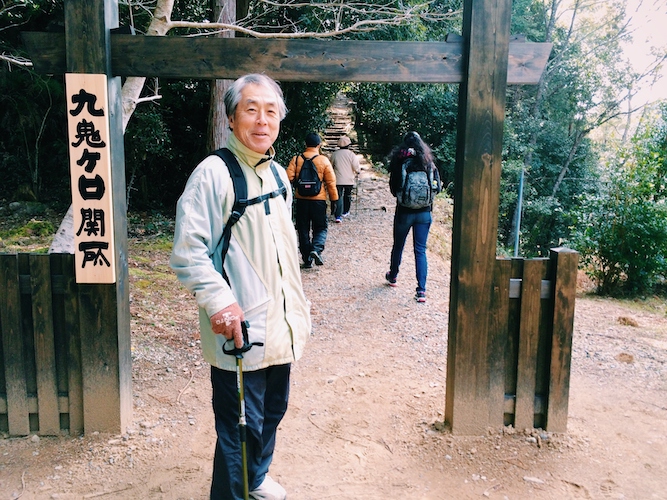
What I like best about the Kumano pilgrimage is that even a thousand years ago, it was– and continues to be– welcoming to all social standings and faiths. I loved that I, a professionally lost and careerless twentysomething running away from reality could walk alongside a seasoned life veteran and respected CEO.
For a couple hours, I got to share an experience and converse with people I normally would never meet or even interact with in my usual social circle.
Finally, we reached our destination, Kumano Hongu Taisha Grand Shrine, another shrine in the Kumano Sanzan. Then we parted ways with EK and his family, though we met up with EK two days after that for a Jazz and Bossa Nova concert in our town that he invited us to.
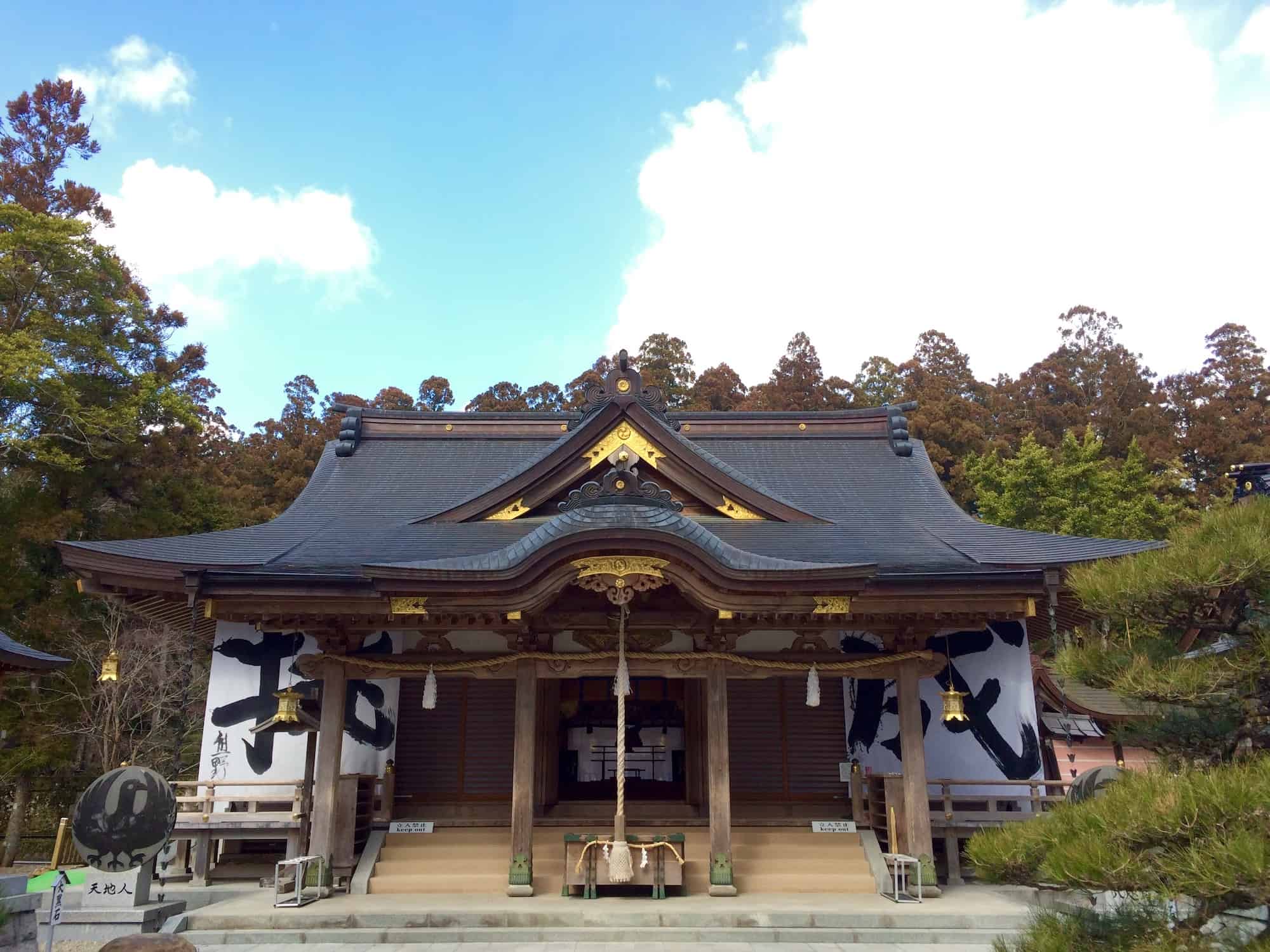
After we exited the shrine we were back where we’d waited at the bus stop some two to three hours earlier. Out of the corner of my eye, I saw the same taxi driver who’d driven us. He was sitting in his cab when he spotted me, smiled, and gave me the typical Japanese head nod/bow and hand wave combination. I smiled and did the same.
We ate lunch at one of the three cafes in town. It was a quaint eatery below a B&B with nostalgic early 2000s pop and R&B hits playing on the stereo as well as homemade bath products and locally-produced preserves and teas for sale.
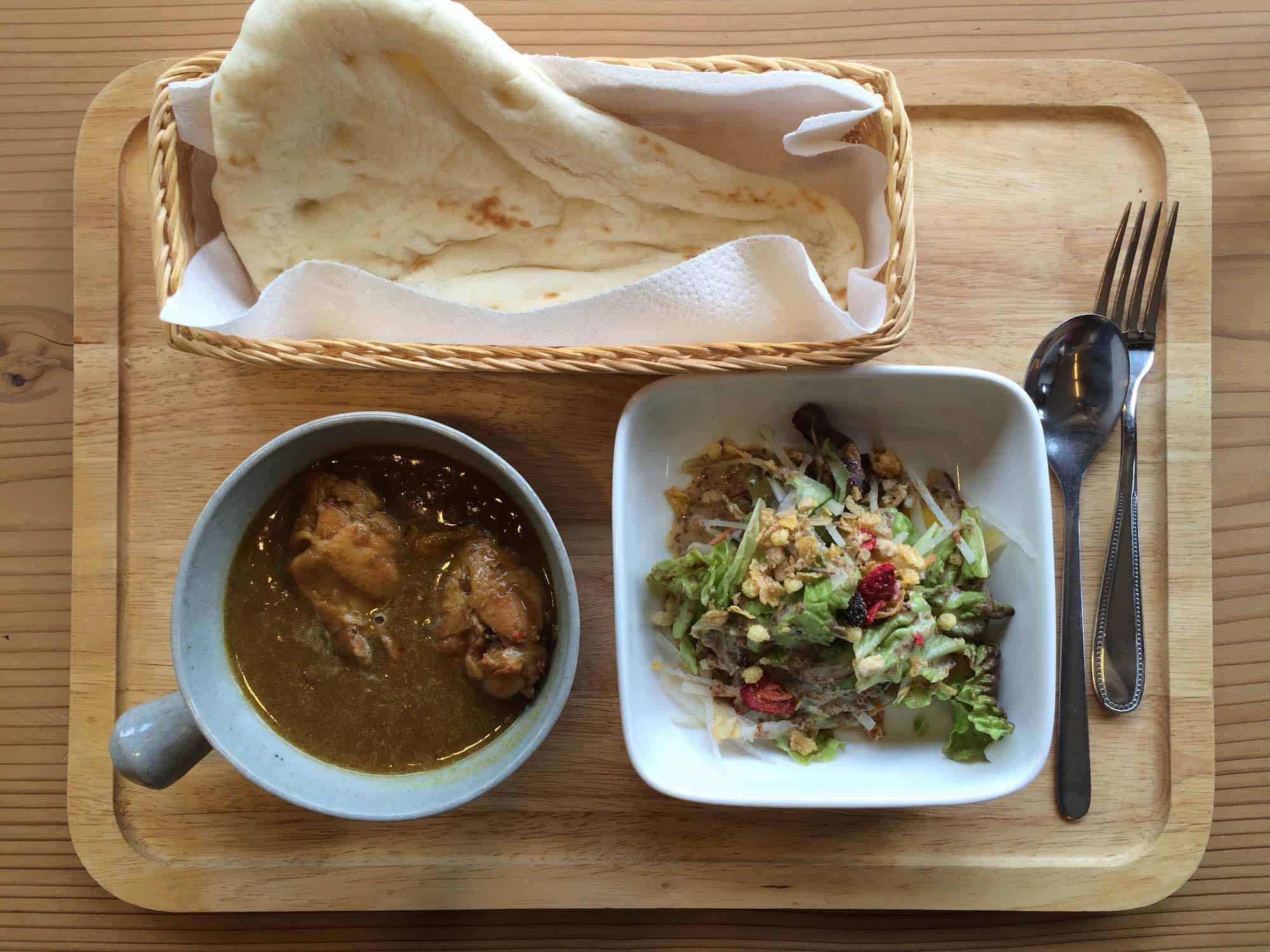
Oyunohara
We wandered over to Oyunohara, the place where Kumano Hongu Taisha was originally located before a huge flood destroyed much of the area. Now it’s marked with the world’s largest Torii gate, called Otorii. The gate signifies the separation between the secular and spiritual worlds. It’s 33.9 meters tall, 42 meters wide, and 172 tons of “Why?” in the middle of nowhere.
If you want to feel tiny and insignificant, but also ponder the purpose of life while trying to figure out how in the world this ginormous pillar of steel got put together by humans and a machine even bigger, then this place is for you.
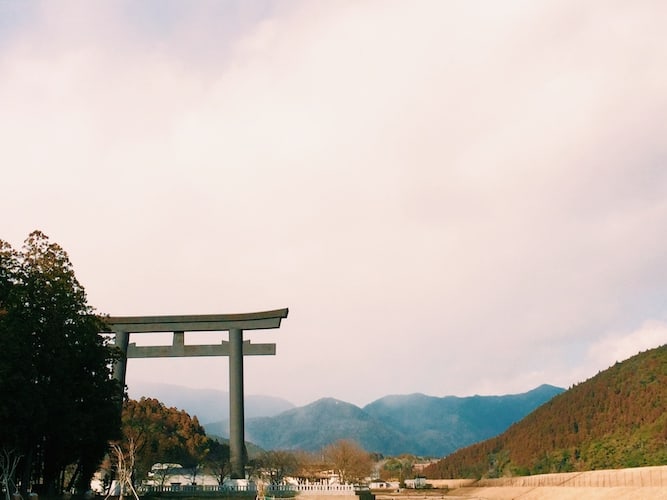
There wasn’t much else to do in the immediate area after that. Everything else was at least an hour or two away, so we just walked up and down the town’s main street for all of about twenty minutes before we decided to pick up some food at the meat shop to make for dinner and call it a day. Oddly enough, the meat shop had more options than the “convenience store.” Just one of the many quirky contradictions you stumble upon in this country.
It was only around 6 p.m. and this was the earliest I’d ever ended a day while traveling. Since everything in this town closed promptly at sunset and the buses were so infrequent, there was nothing to do but go back to the inn and relax. I needed that; I needed to be left no choice but to slow down, stop moving, and rejuvenate.
Usually, when I visit cities I make it a point to not return to my hostel until about 10-11 p.m. In the city I feel like I always need to be out doing something, not wasting time sitting in a room when I could be wandering around, exploring, or eating. My “go big or go home” attitude often gets me in trouble, leaving me exhausted after trips instead of rested. I have this counterintuitive notion that if I don’t go home completely worn out, I didn’t vacation properly.
Epilogue
Needless to say, this pilgrimage out into the middle of nowhere, to wander where people of all walks of life did a thousand years ago alongside strangers turned friends, was the perfect getaway I needed to recharge and remind myself of why I moved to Japan in the first place.
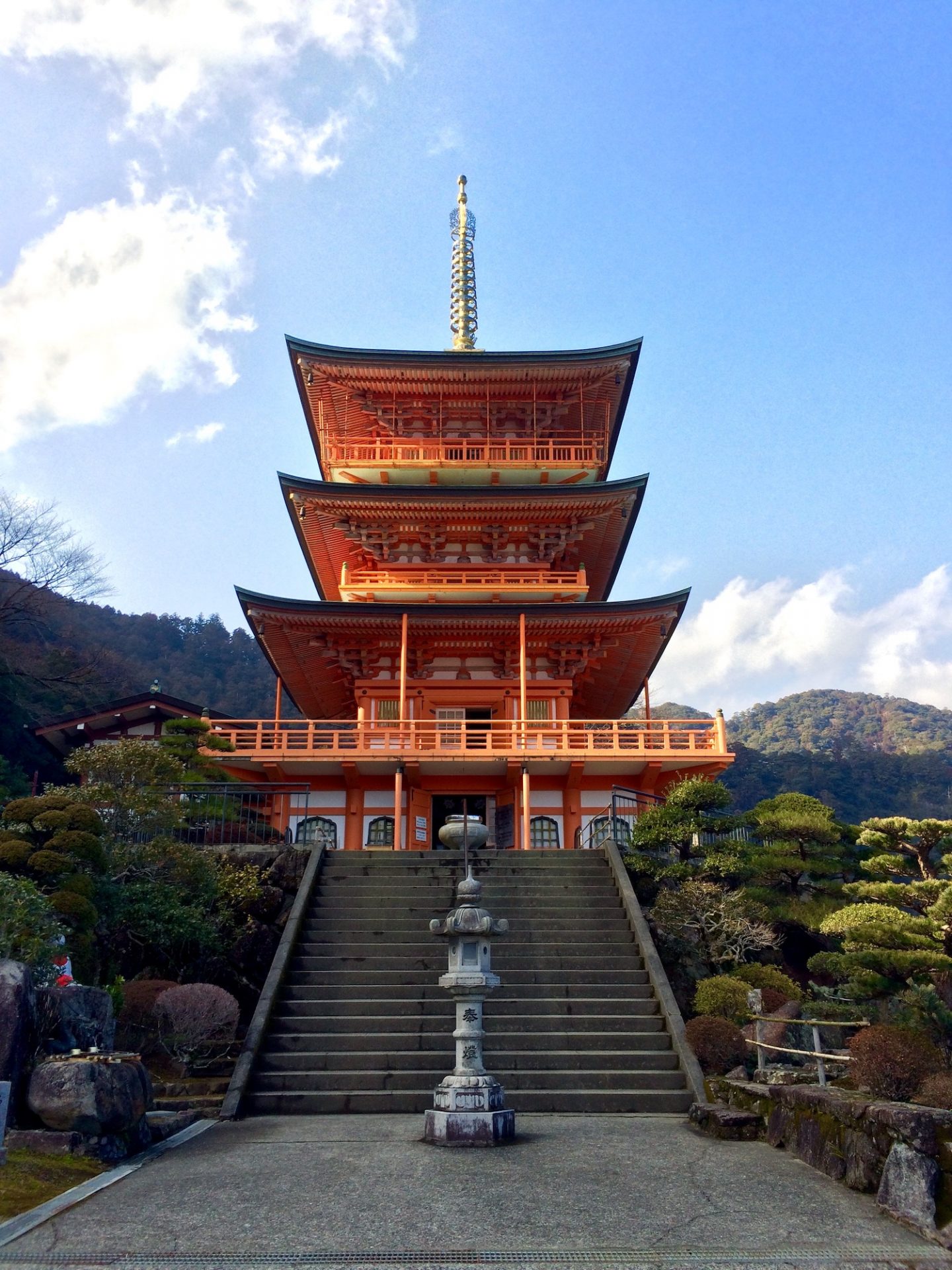
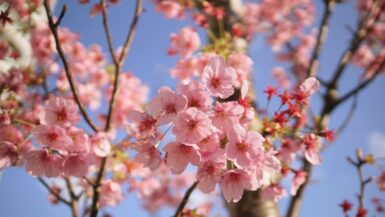
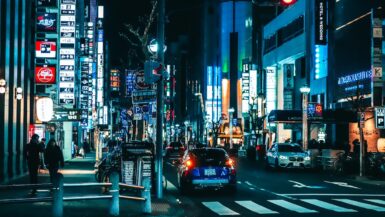
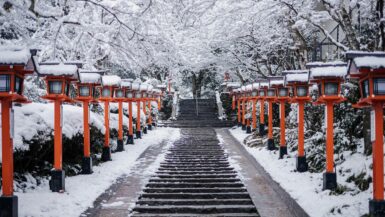
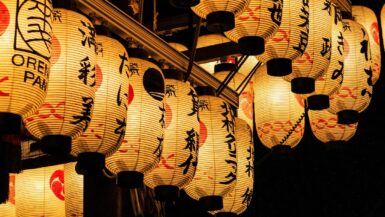
Hi, I’m Pawasut from Thailand. I am not good at English but I tried to understand your blog. May could I further ask you that what Kumano-kodo look like in February, is it full of snow or still have some green. It would be much appreciated if you have image/picture.
Thank you so much :)
Hi, Pawasut! So sorry for such a late reply but it’s just cold, not snowy like the pictures. Enjoy!